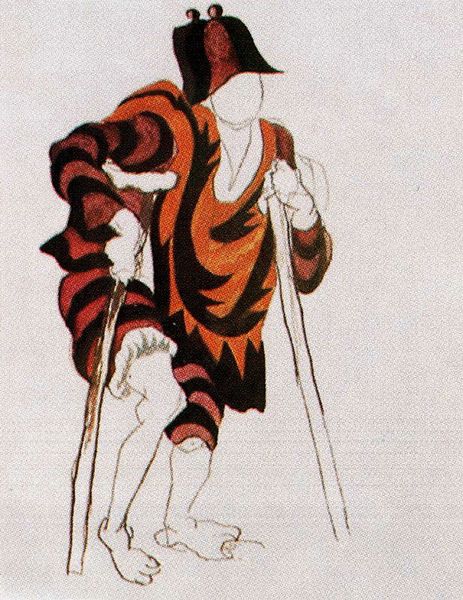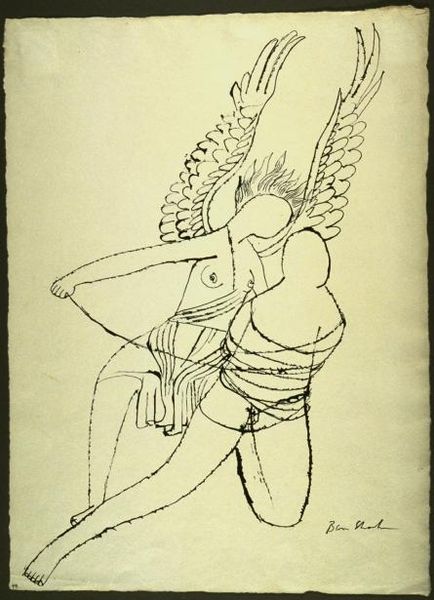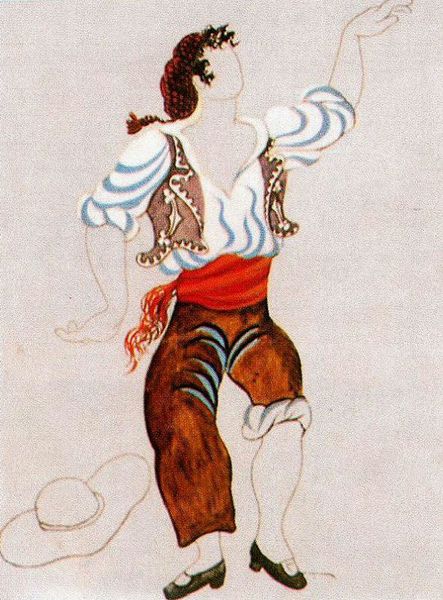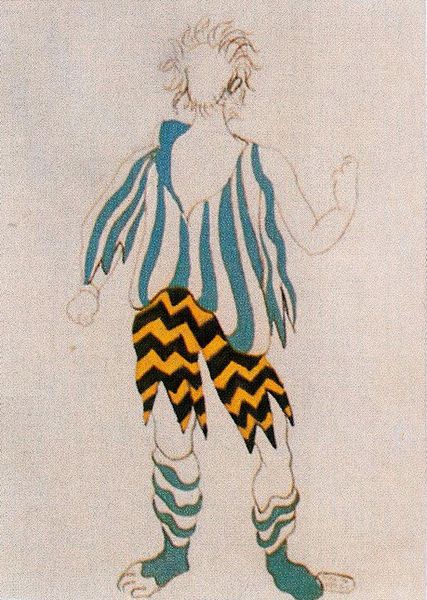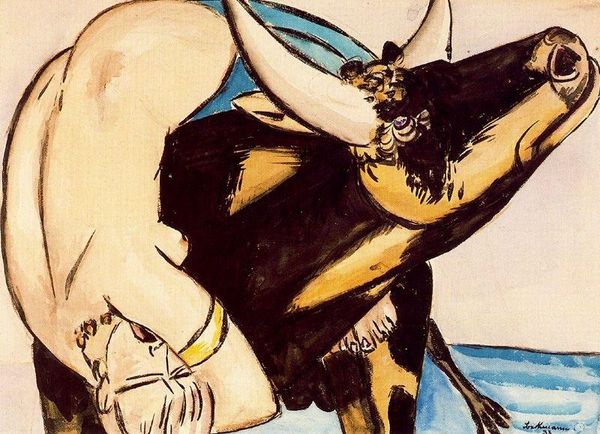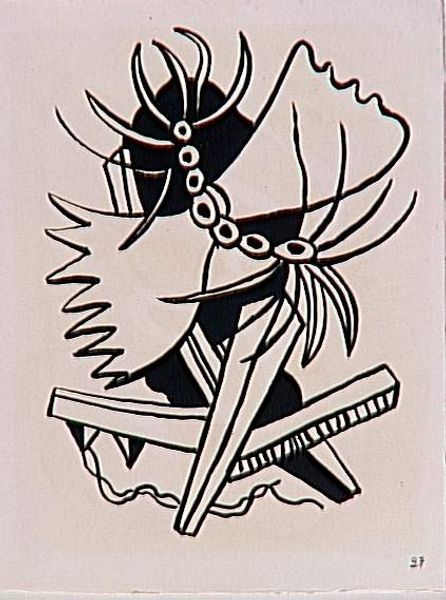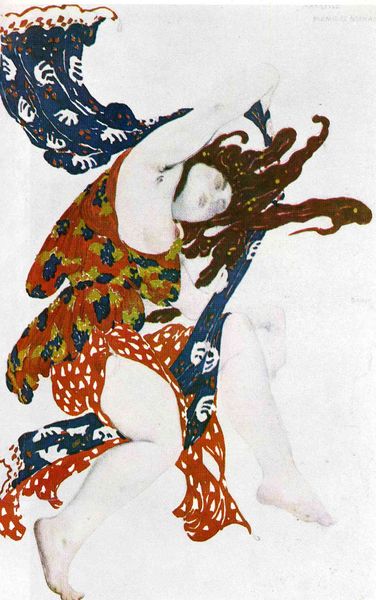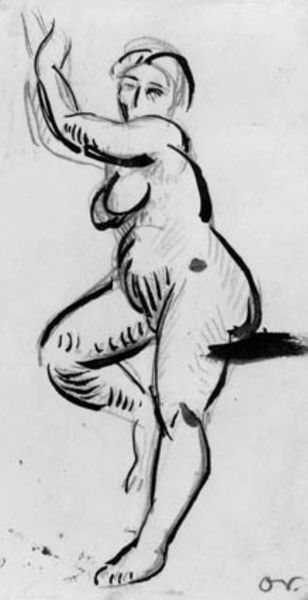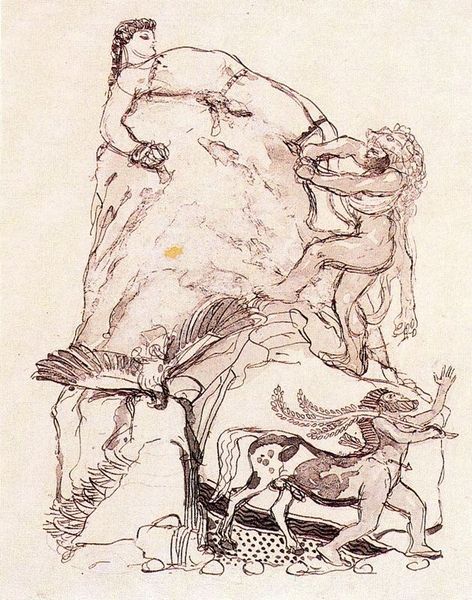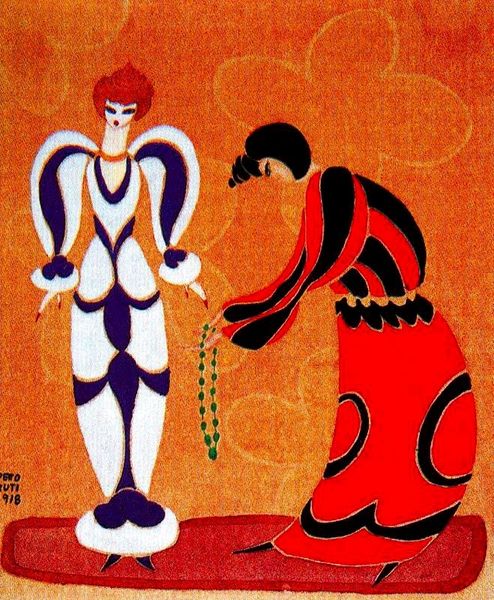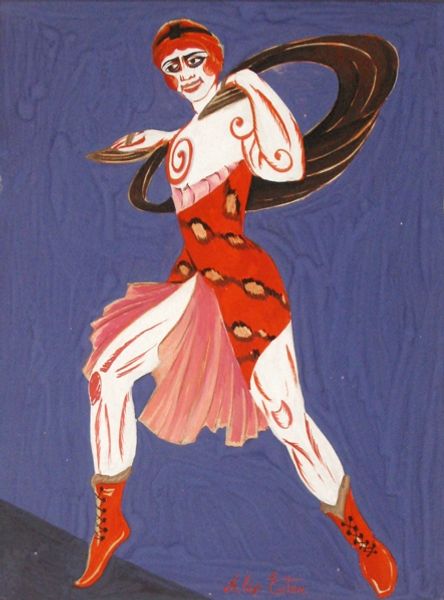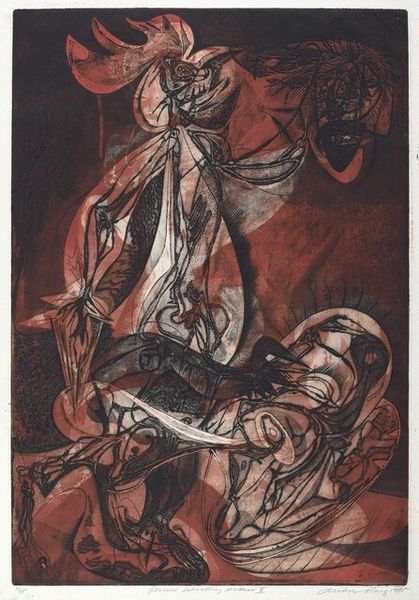
drawing, paper, ink
#
drawing
#
cubism
#
caricature
#
figuration
#
paper
#
ink
#
sketch
#
costume
#
watercolour illustration
Copyright: Public domain US
Curator: Here we have Pablo Picasso's costume design for the ballet "Tricorne," created in 1917, employing ink and watercolor on paper. What strikes you initially about this piece? Editor: My immediate impression is one of suppressed power. The figure, seemingly weighed down yet stepping forward, has a bizarre almost comic dynamism. The incomplete lines add to the sense of potential energy waiting to be unleashed. Curator: Precisely. This work serves as a critical example of the dynamism characterizing Picasso’s designs and the ballets he involved himself with. Given its creation amidst the backdrop of the First World War, one can’t help but consider it through a lens of broader social and political unrest, almost like a physical manifestation of the period's anxieties. Editor: I see how this burly man relates to anxieties: he recalls Atlas, forever bearing the world. I keep coming back to those blue accents. They’re unexpected, placed on the shins like that. What do you think they signify in the context of the entire design? Curator: That's a potent connection. The blue is fascinating and does not seem representational: perhaps a commentary on the artificiality of spectacle amidst the grittiness of lived realities. Picasso and his peers, after all, actively confronted class and nationalism through subversive caricatures in art and theater. Editor: The flame-like motifs also seem central to that symbolic role, repeating the same shade of red as that accenting his arms and torso, don't you agree? This hints at both dynamism and violence and draws visual references from classical figures in a playful modern form. Curator: Absolutely. His figures, like those encountered in revolutionary performances of the time, blur the lines between seriousness and farce. So to interpret them through modern themes, while always relevant, could undermine how it's meant to question the traditional hierarchies. Editor: Very true, a complex interplay to unpack, and essential for audiences to recognize. Curator: Indeed. This piece remains such an eloquent case of an artwork operating within broader themes, still speaking loudly through our modern perspectives.
Comments
No comments
Be the first to comment and join the conversation on the ultimate creative platform.
